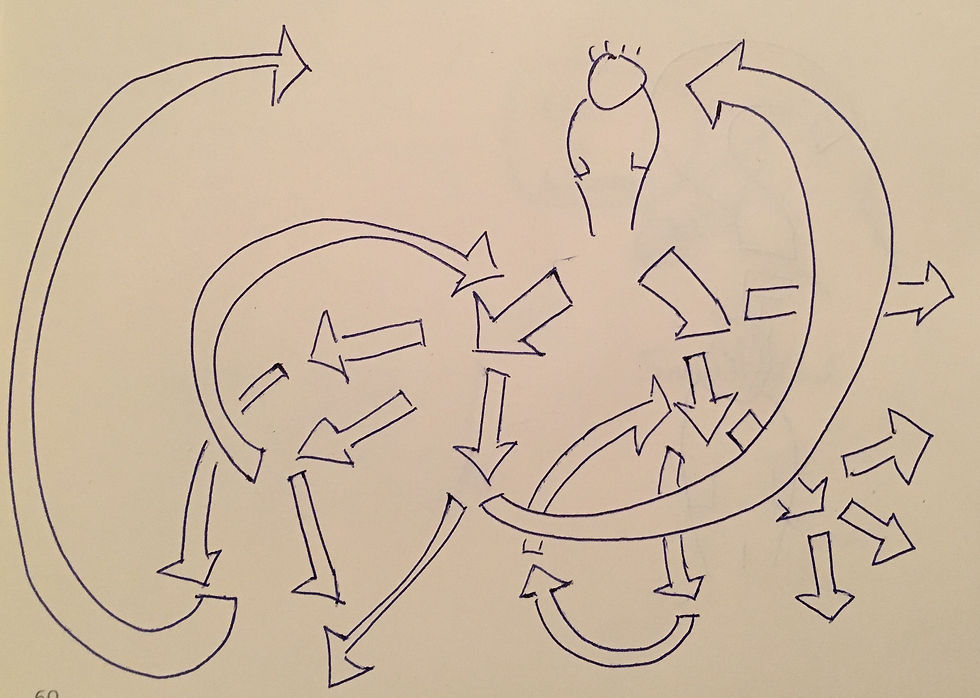Sepsis: Your Zebras

The publication and enforcement of sepsis guidelines and bundles has decreased mortality in severe sepsis and septic shock, but we run the risk of defaulting to autopilot when treating our febrile patients and missing other potential fatal diagnoses. What else do you need to keep in mind when evaluating and treating the febrile patient, besides sepsis?

Hear hoofbeats, treat for horses, consider zebras.
Here's a basic back-pocket differential diagnosis for the non-infected febrile patient.
Malignancy
Leukemia, lymphoma, pheochromocytoma
Autoimmune
rheumatoid arthritis, systemic lupus erythematosus
In patients with lupus and fever, fever is caused by infection 54%, and caused by a lupus flare 42%
Drugs
Allergic reactions
Drug allergy: DRESS syndrome
Drug rash with eosinophilia and systemic symptoms
Fever present in 90% of patients
Most common with antiepileptics, allopurinol, antipsychotics
Rx: corticosteroids
Anaphylaxis with fever
Metabolic consequence
Serotonin syndrome
Excess serotonin -> AMS, tachycardia, hyperreflexia, muscle breakdown and rhabdo. Linezolid, fentanyl, SSRIs
Hunter criteria: SSRI + one of following
Hypertonia, temperature > 38, and ocular or induced clonus.
Tremor and hyperreflexia
Ocular clonus and agitation/diaphoresis
inducible clonus and agitation/diaphoresis
Spontaneous clonus
Rx: benzodiazepines, stop the SSRI, cyproheptadine if severe.
Neuroleptic malignant syndrome
AMS, tachycardia, lead pipe rigidity. From dopaminergic antagonists or withdrawal from parkinson’s meds. Also antiemetics can precipitate. Most commonly Haloperidol and fluphenazine
Can cause rhabdomyolysis
Rx: Stop offending agent, supportive care, dantrolene, bromocriptine if severe.
Sympathomimetic toxidrome (amphetamines/MDMA/EtOH withdrawal)
Tachycardia, agitation, hyperthermia, hypertension. Sweating. Dilated reactive pupils.
Rx: benzodiazepines.
Anticholinergic toxidrome (tricyclics especially)
Dilated nonreactive pupils, urinary retention, anhidrotic hyperthermia.
Rx: benzodiazepines, physostigmine (but controversial)
Salicylates
Respiratory alkalosis, Non-anion gap metabolic acidosis, anion-gap metabolic acidosis (from lactic acid).
Can cause tinnitus in mild toxicity
Can present as sepsis, DKA in severe toxicity
Rx: bicarbonate, dialysis
Environmental fever from high external temps
Neuro manifestations. Tachycardia.
Death heat stroke (t > 40c) 3000 from 2006-201010
Rx: evaporative + convective cooling, chilled IV fluids: fan over wet body spra
y
Dantrolene not recommended
Evaporative cooling
Hyperthyroidism
Can be set off by neck trauma (in some cases intubation), infection, iodinated contrast.
Fever, diaphoresis, N/V/D, tachycardia > fever are common. Progresses to paranoia, psychosis, and in some cases, status or coma.
Rx: beta blockade, steroids, thyroid hormone inhibition, IV iodide, fluids.
Neurologic
Subarachnoid/intracranial hemorrhage
Embolic vs thrombosis vs infarction (much less likely)
MI
Renal infarct
PE
"low grade fever" is part of the classic pulmonary embolism triad, but in reality, on 6% of patients have a fever of greater than 38 degrees celsius.
Iatrogenic
Blood transfusion reaction
Malignant hyperthermia
Anesthetics (can happen after succinylcholine), hypercarbia, muscle rigidity
Rx: Dantrolene
References:
McGugan EA. Hyperpyrexia in the emergency department. Emergency Medicine 2001;13(1):116.
Stein PD, Afzal A, Henry JW, Villareal CG. Fever in acute pulmonary embolism. Chest 2000;117(1):39–42.
Boushra MN, Miller SN, Koyfman A, Long B. Consideration of Occult Infection and Sepsis Mimics in the Sick Patient Without an Infectious Source. J Emerg Med. 2018 Nov 2.
Bommersbach TJ et al. Management of Psychotropic Drug-Induced DRESS Syndrome: A systematic review. Mayo Clin Proc. 2016 Jun;91(6):787-801.
Dewitt S et al. Evaluation of fever in the emergency department. Am J Emerg Med 35(2017)1755-1758.
Reulbach U, Duetsch C, Biermann T, et al. Managing an effective treatment for neuroleptic malignant syndrome. Crit Care 2007;11: R4.
Birch et al. 83-year-old Woman with a Fever and Emesis. Clin Pract Cases Emerg Med. 2018 Oct 16;2(4):276-282.
Gaudio FG, Grissom CK. Cooling Methods in Heat Stroke. J Emerg Med. 2016 Apr;50(4):607-16.
Zhou WJ et al. The Causes of and Clinical Significance of Fever in Systemic Lupus Erythematosus: A Retrospective Study of 487 Hospitalized Patients. Lupus 18(9):807, August 2009.
Klubo-Gwiezdzinska J, Wartofsky L. Thyroid emergencies. Med Clin North Am. 2012 Mar;96(2):385-403.





















